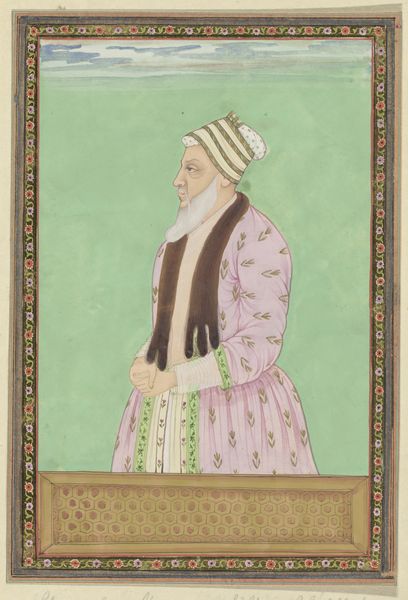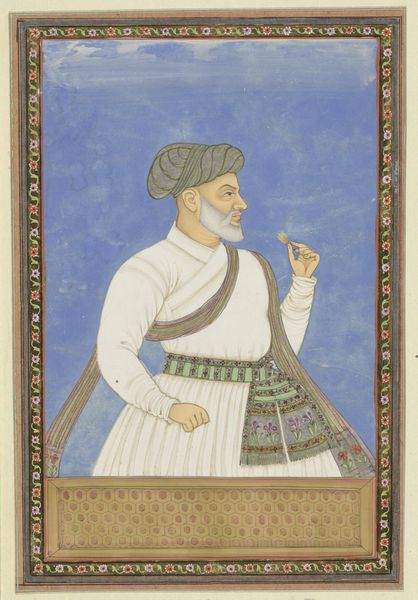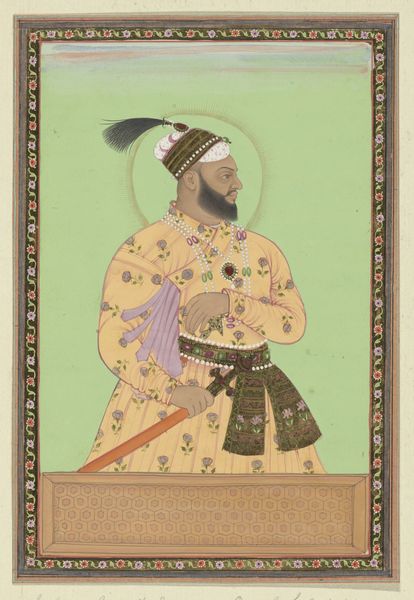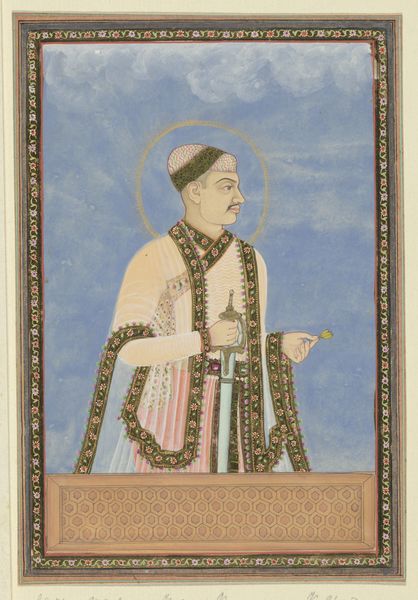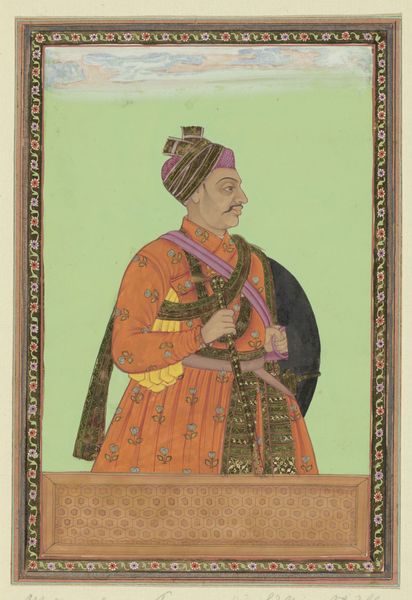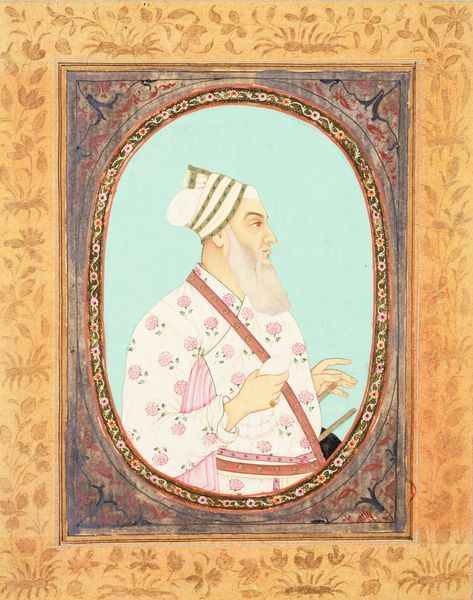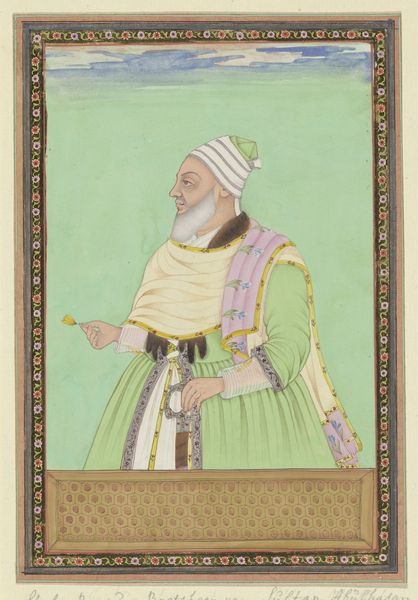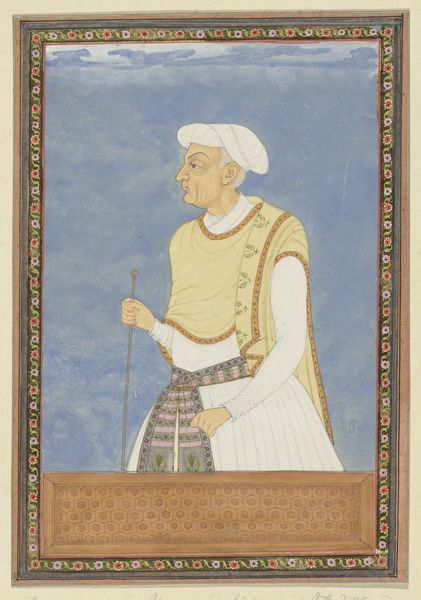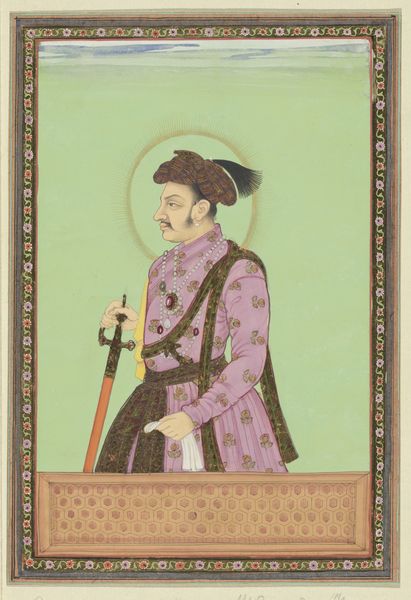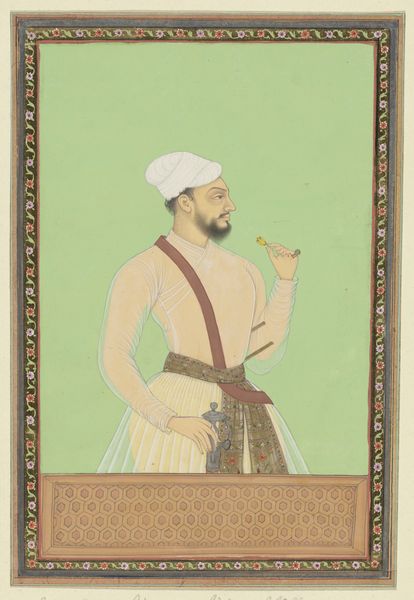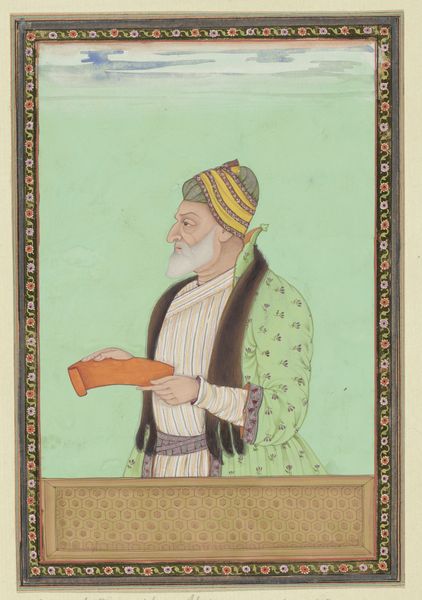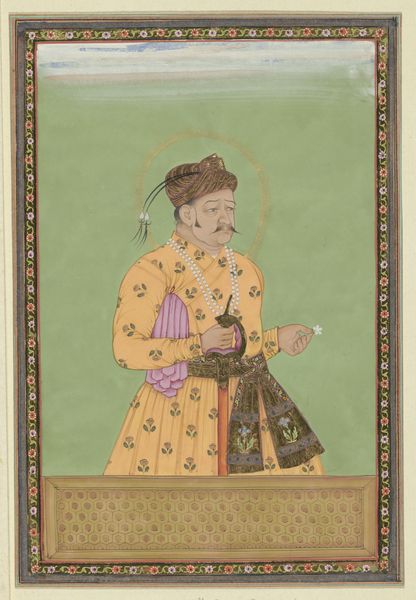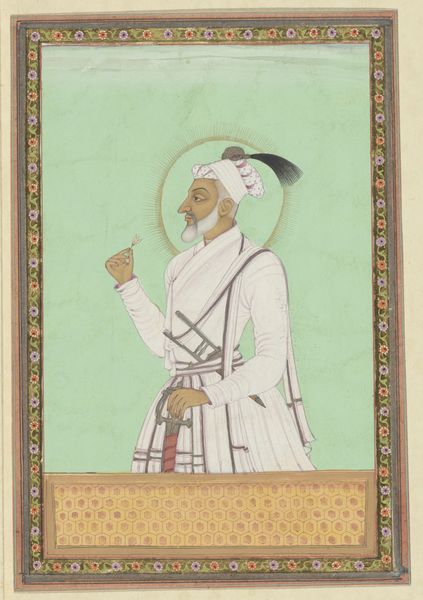
Portret van Shah Jahan Padshah, de zoon van Jihangir, die na zijn vader regeerde in Hindustan c. 1686
0:00
0:00
anonymous
Rijksmuseum
painting, watercolor
#
portrait
#
water colours
#
painting
#
asian-art
#
watercolor
#
watercolor
Dimensions: height 203 mm, width 140 mm
Copyright: Rijks Museum: Open Domain
Editor: Here we have a portrait of Shah Jahan Padshah, an artwork created around 1686 by an anonymous artist. It's made with watercolors and it strikes me as a very formal depiction, quite static almost, and regal, of course. What stands out to you most in this piece? Curator: What immediately captures my attention is the construction of power through imagery. Consider the context: Mughal emperors commissioned works like this not just as portraits, but as statements. How does the visual language—the gold leaf, the posture, even the flower—contribute to a deliberate construction of authority? Editor: So, you're saying it's less about capturing his likeness and more about crafting a specific image of him as a ruler? Curator: Precisely. Think about the political climate and the need to legitimize rule. What symbols here might be read by contemporary viewers as conveying power, legitimacy, or even divine right? Does the halo serve such a function? And what does it mean to see him framed as almost ethereal? Editor: That’s a good point. I hadn’t considered the halo in that way. And now that you mention it, even his pose seems so calculated to project a sense of stability and strength. Curator: Exactly! The placement within the museum reinforces this, doesn't it? A portrait in the Rijksmuseum presents Shah Jahan not just as a historical figure, but as part of a broader narrative about trade, colonialism, and cultural exchange. What responsibility does the museum bear in presenting such a figure, especially given the complexities of Mughal rule and its interactions with other cultures? Editor: That really gives me a new perspective. It's so much more than just a pretty painting of a king! I see how the portrait becomes a tool to understand power, both his and, even, that of institutions like museums. Curator: And understanding that is key to unpacking so much of art history. Editor: Definitely. Thanks for sharing your insights. I’m leaving here seeing a lot more than I came in with!
Comments
No comments
Be the first to comment and join the conversation on the ultimate creative platform.
